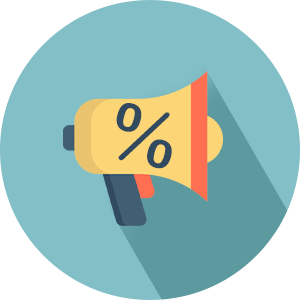How would NIKE in uppercase fit differently to both men and women consumer decisions, compared to head & shoulders in lowercase? And what subtle effects had switching PEPSI to pepsi in 2004, after the brand case had been uppercase for 32 years? The present research in neuromarketing explains what effects letter case might have on consumer decisions. UBER and lyft seem to provide similar services, although their brand case might appeal specifically to either men or women.
Posted in Archive, Strategy
published on Wednesday, 01 May 2019
Brainwashing that has gone green
There has been an increasing amount of warnings about climate change and its rash consequences in the media. For some, attempts to preserve the Earth for the future generations became a cool trend. As a result of this, all sorts of green products have been filling the shelves.
But what makes a green product? Does a green can make a soft drink environmentally-friendly? Can we call a regular shampoo a green product by adding one natural ingredient? Such a practice of highlighting only a few green attributes is called greenwashing.
Posted in Archive, Strategy
published on Monday, 04 March 2019
Have you ever been to a pub with the intention of doing just a few drinks and going home early, only to stay until closing time? A lot of people probably have. If you are one of them, have you ever wondered why you've indulged yourself much more than intended? There are several excuses you could tell yourself to justify staying longer than you should have. Maybe it was a really good night out and it would have been a shame to miss it. Maybe the DJ was playing your favorite music. Or maybe you're just bad at planning.
A less common excuse is the dim lighting in the pub. Few people will believe you if you tell them that your hangover is caused by the lighting in the pub. However, research has indicated that this may have a significant effect on your night out after all. It turns out that the amount of light does more than just setting the atmosphere.
Posted in Archive, Strategy
published on Monday, 07 January 2019
In the modern world, we hear a lot about crowdfunding: it helps small and medium companies to generate a budget for their products and achieve popularity by promoting it via various Kickstarter-alike platforms. But what about crowdsourcing? While crowdfunding assists in gathering money for projects, crowdsourcing helps with getting consumer-derived ideas for new products. People tend to reject the practice of crowdsourcing, considering it as less effective. Judge the numbers: 9.65 million of Google search results for “crowdsourcing” versus 36.3 million for “crowdfunding” – demand creates supply, and the “shortage” for “crowdsourcing” says a lot.
Crowdsourcing becomes more interesting if it can also bring financial benefits and boost your sales. How? By applying it wisely, of course.
Posted in Archive, Strategy
published on Monday, 26 November 2018
2 euros off or a complementary recipe book?
Price-based incentives remain one of the most common types of sales promotion. However, non-monetary incentives have become increasingly more common. Non-monetary incentives mean that consumers receive a free gift (premium) with a purchase of a product. A good example is McDonalds’s Happy Meal, which comes with a free toy.
So what do consumers prefer? 2 euros off or a complementary recipe book? A recent study looked at the fast moving consumer goods (FMCG) retail sector to explain why price cuts are superior to premiums.
Posted in Archive, Strategy
published on Monday, 01 October 2018





